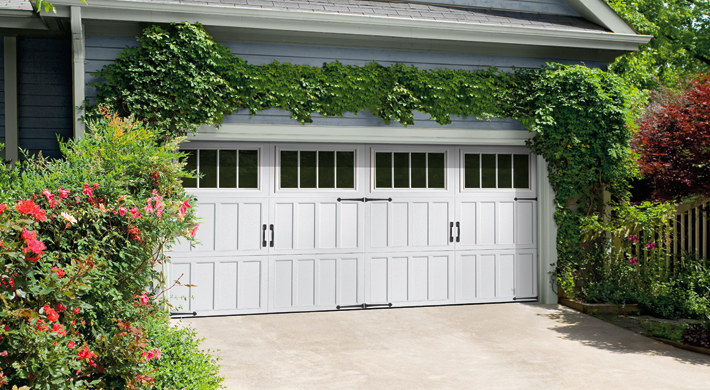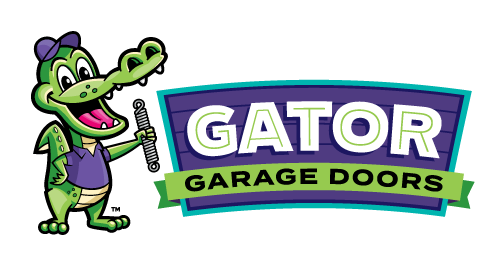As winter wraps up in Austin, Texas, and we edge closer to spring, the weather starts warming up, and the days get longer. This is also the time when many of us dive into spring cleaning, organizing our homes, and clearing out stuff we no longer need. However, it’s important not to overlook our garages, especially the garage doors and openers.
Ensuring these systems are in optimal condition is more than just a matter of convenience; it’s about safety. Despite their apparent simplicity, garage doors can pose serious risks if they malfunction. The harsh winter conditions can increase issues, making regular maintenance crucial for safety and reliability.
Beyond safety concerns, maintaining well-functioning garage doors and openers offers additional benefits. It enhances efficiency, reduces the likelihood of unexpected breakdowns, and extends the lifespan of these essential components. By addressing minor issues enables homeowners to prevent costly repairs and long-term inconvenience.
At Gator Garage Doors, we understand the importance of keeping your garage doors operating smoothly. Gator Garage Doors Technicians are committed to delivering expert guidance and support to guarantee the safety and optimal performance of your garage doors not only during the spring season but also in the long term.
As a homeowner, you hold the power to maintain your garage door’s excellent condition as the weather changes. This proactive approach ensures worry-free operation and peace of mind at home. In the following article, we’ll guide you through ways to inspect and maintain your garage door and opener.
Things To Look for while doing a Spring Inspection:
Doing regular maintenance on your Garage Door and Opener will allow you to identify and resolve minor issues before they become expensive repairs or lead to system failures. This proactive approach not only improves the safety and efficiency of your garage but also prolongs the lifespan of your garage door and also saves you time, money, and inconvenience in the long run. Below are some tips you can take to maintain and inspect your garage door.
- Start with a Clean Slate: Start by using a compressed air duster to clear debris from the tracks and rollers. This helps reduce friction, improving the efficiency of your door.
- Inspect your Garage Door Spring: Visually look for wear and tear on your springs for the following:
-
- Rust: Rust on the springs can weaken them, leading to potential breakage.
- Stretched Springs: Over time, springs can stretch out and lose their tension, which affects the door’s operation.
- Damage: Any visible cracks or breaks in the springs are a clear sign they need to be replaced immediately.
- Frayed Cables: While not part of the spring itself, frayed cables can indicate that the spring system is putting too much tension on the cables or that the system is not balanced.
- Balance and Tension: If your garage door doesn’t stay in place when opened manually halfway, or if it feels heavy when lifted, the springs may not be properly tensioned. This can be checked by disconnecting the opener and manually lifting the door to the midpoint. If the door remains steady, it’s balanced. If it drops, the springs might require adjustment. It’s important to schedule an appointment with a professional garage door company to add tension to the springs or replace them, as this task can be hazardous without the necessary tools and experience.
- Difficulty in Operation: A door that’s hard to open or closes too quickly may have spring issues.
- Tighten Hardware: The vibration of daily operation can loosen hardware over time. Periodically check and tighten all roller brackets and bolts.
- Squeaking or Grinding Noises: While some noise can be normal, excessive squeaking or grinding sounds can indicate that the springs are not functioning smoothly.
3. Lubricate Hardware: Winter can dry out the moving components of your garage door system, necessitating a thorough lubrication. Ensure you apply a good quality lubricant to:
- Rollers
- Hinges
- Tracks
- Springs
4. Check Weatherstripping: Inspect the weatherstripping along the bottom of the garage door for any signs of damage or wear. Damaged weatherstripping can allow moisture, pests, and debris to enter the garage, so replace it if necessary to maintain a secure seal.
Steps On How To Maintain Your Garage Door Opener:
Maintaining your garage door opener is important for its smooth and reliable operation. In this section, we’ll guide you through the essential steps to keep your garage door opener in top condition, from regular inspections to necessary adjustments and lubrication. By following the maintenance tips below, you can delay the longevity of your garage door opener and enjoy worry-free operation for years to come.
- Visual Inspection: Regularly inspect the garage door opener for signs of wear or damage.
- Excessive Noise During Operation: Grinding, rattling, or squeaking noises can point to mechanical issues, such as worn gears, loose hardware, or the need for lubrication.
- Lubrication: Annually lubricate the garage door opener’s chain or belt by applying a thin coat of white lithium grease annually to both the top and bottom surfaces of the rail where the trolley moves. After applying the grease, operate the opener back and forth to distribute it evenly along the trolley’s path.
- Test Safety Features: Test the auto-reverse mechanism by placing something like a block of wood or a similar object under the door. The door should reverse upon contact with the object. Additionally, if equipped, test the photoelectric system by passing your leg in the door’s path to ensure it reverses.
- Check Door Balance: Disconnect the opener (using the manual release handle) and manually open the door halfway. If it doesn’t stay put, the door may be out of balance, affecting the opener’s performance.
- Tighten Hardware: The vibration of daily operation can loosen hardware over time. Periodically check and tighten all roller brackets and bolts.
- Replace Batteries: Regularly check and replace the batteries in your remote controls and the external keypad if necessary.
- Test the Battery Backup: Not all systems include a battery backup, but if yours does, take these steps to ensure it can operate your garage door during a power outage. If there’s no visual indicator, test the battery’s voltage with a multimeter. A fully charged battery should align with the specifications in the user manual, usually around 12 volts for many models. If the voltage is significantly lower, it’s time to replace the battery.
- Review and Adjust Settings: To ensure your door opens and closes properly, you will need to check the force setting and limits on the garage door opener.
- Clean and Inspect Sensors: Clean the sensors located near the bottom of the garage door tracks from dirt, dust, and debris. Test the sensors by closing the door and waving a broom or similar object in front of them. The door should reverse immediately upon detecting the obstruction.
Conclusion:
As we say farewell to the brisk winter air and welcome the freshness of spring, let’s not forget to give our garage doors and openers the attention they deserve. By dedicating time to inspect and upkeep these vital components, we not only ensure their smooth operation but also enhance the safety and security of our homes.
At Gator Garage Doors, we’re dedicated to supporting you every step of the way. Whether you need expert guidance to maintain your garage door system throughout the seasons or find yourself facing repairs beyond your capabilities during an inspection, we’re here for you. Count on us to get the job done swiftly and effectively because, at Gator Garage Doors, we know that The Gator Can Fix It!
So let’s roll up our sleeves, dive into spring maintenance, and make sure our garage doors are ready to greet the new season with confidence.



